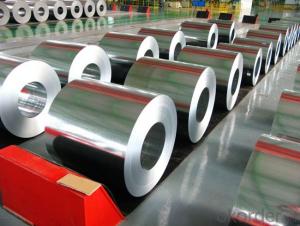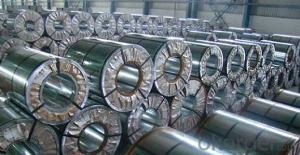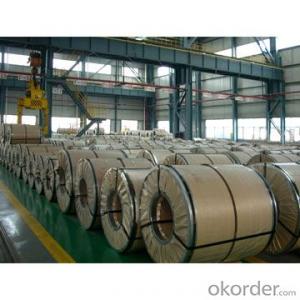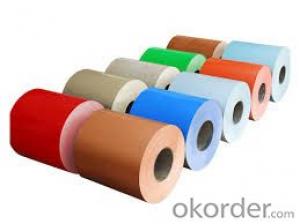Prepainted Galvanized Steel Coil for Building Decoration
- Loading Port:
- Qingdao
- Payment Terms:
- TT or LC
- Min Order Qty:
- 10 m.t.
- Supply Capability:
- 10000 m.t./month
OKorder Service Pledge
OKorder Financial Service
You Might Also Like
Prepainted Galvanized Steel Coil for Building Decoration
Main Structure of Prepainted Galvanized Steel Coil:
Thickness: 0.16~1.2mm
Zinc Coating: Z60~Z180
Coil ID: 508/610mm
Coil Wgt.: 2.5~8Mt
Specification for Prepainted Galvanized Steel Coil
PRODUCT | prepainted galvanized steel coil |
STANDARD | GB/T-12754: 2006, JIS3302, EN 10142, ASTM A653, JIS G3302, SGCC/SGCH, GB/T2518, European Standard, ASTM A792, JIS G3321, JIS G3317 |
BASE PLATE | Cold rolled steel sheet, hot dipped zinc coated steel sheet, hot dipped A-dx51d z100 galvanized steel coil coated steel sheet |
EQUIPMENT | Double coating double baking; three coating three painting |
CAPACITY | 500,000Mt/year |
SIdx51d z100 galvanized steel coilE | Thickness 0.16mm-1.2mm, width 700mm-1250mm |
dx51d z100 galvanized steel coilINC COATING | 60g-180g |
PAINT THICKNESS | Top:20+-5um, back:5-7um |
COIL WGT | 2.5Mt-8Mt |
COIL ID | φ508mm-φ610mm |
BASE SHEET | Cold rolled steel sheet, hot dipped zinc coated steel sheet (small, regular or zero spangle),hot dipped A-dx51d z100 galvanized steel coil coated steel sheet |
SURFACE PAINT | EP, PE, HDP, SMP, PVDF |
COLOR SERIES | RAL color number series |
SURFACE TYPE | Printed, embossed, corrugated |
FAQ
Q: How’s your service?
A:1. Offer customers 24/7 service, whenever you need us, we are always here for you.
2. Immediate response. Your any inquiry will be replied within 24 hours.
3. Support small order quantity, for the first time cooperation customers, we can send you less quantity for trial order.
4. Support third party inspection company to inspect and check the quality and quantity before delivery.
Picture:
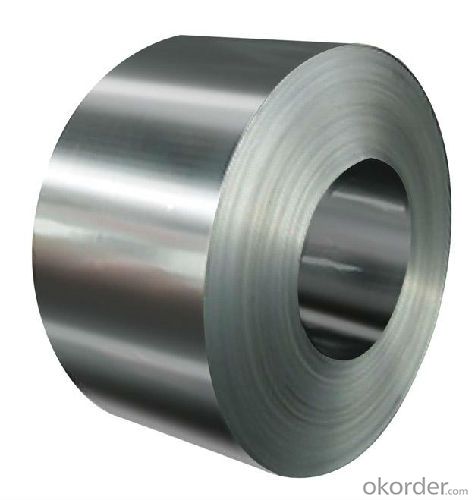
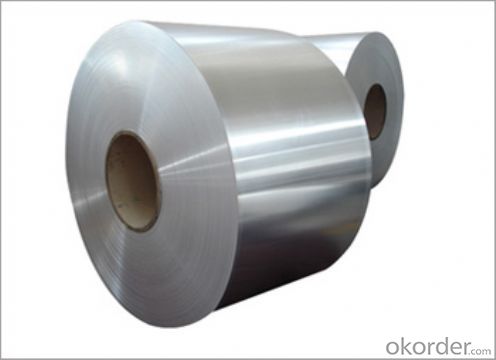
- Q:What are the challenges in storing and handling steel coils?
- Storing and handling steel coils pose several challenges due to their size, weight, and potential risks associated with their transportation and storage. Some of the challenges include: 1. Space requirements: Steel coils are generally large and bulky, requiring ample storage space. Finding suitable storage facilities that can accommodate the size and weight of the coils can be a challenge, especially in urban areas where space is limited. 2. Weight and handling: Steel coils can weigh several tons, making them difficult to handle safely. Specialized equipment such as cranes or forklifts with sufficient lifting capacity is necessary for moving and positioning the coils without causing damage or injury. 3. Stackability: Storing steel coils in a safe and efficient manner requires careful consideration of their stackability. Coils must be stacked in a way that prevents deformation or damage to the lower coils, ensuring stability and minimizing the risk of toppling. 4. Corrosion prevention: Steel coils are susceptible to corrosion, especially when exposed to moisture or harsh environmental conditions. Implementing proper corrosion prevention measures, such as protective coatings or climate-controlled storage, is crucial to maintain the quality and integrity of the coils. 5. Safety risks: Handling steel coils can be dangerous, as they can shift unexpectedly during transportation or storage. This poses a risk to workers involved in the handling process. Adequate training, appropriate personal protective equipment (PPE), and strict safety protocols are essential to minimize the potential for accidents or injuries. 6. Transportation challenges: Transporting steel coils from manufacturing facilities to storage facilities or end-users can be logistically complex. Coordinating the loading, securing, and unloading of the coils onto trucks or shipping containers requires careful planning and adherence to safety regulations. 7. Quality control: Steel coils must be stored and handled in a way that maintains their quality. Any mishandling or improper storage conditions can lead to deformations, scratches, or other defects that can affect the performance and value of the steel. Overall, the challenges in storing and handling steel coils require attention to detail, proper equipment, and adherence to safety protocols to ensure the integrity of the product, the safety of workers, and the efficiency of operations.
- Q:Hi, I need to know why stainless steel is rust proof please tell me its for my science project. :)
- Why doesn't stainless steel rust? Nancy Avery, New London, Conn. Metallurgical engineer Michael L. Free of the University of Utah offers this explanation: Stainless steel remains stainless, or does not rust, because of the interaction between its alloying elements and the environment. Stainless steel contains iron, chromium, manganese, silicon, carbon and, in many cases, significant amounts of nickel and molybdenum. These elements react with oxygen from water and air to form a very thin, stable film that consists of such corrosion products as metal oxides and hydroxides.
- Q:Is there a difference between hot rolled and cold rolled steel coils?
- Yes, there is a significant difference between hot rolled and cold rolled steel coils. Hot rolled steel coils are produced at high temperatures and are typically used for applications that require malleability and ductility. On the other hand, cold rolled steel coils are produced at room temperature and undergo a process that results in a smoother, more precise finish. Cold rolled steel coils are often used in applications that require a higher degree of strength and surface quality.
- Q:How are steel coils inspected for surface defects after processing?
- Steel coils are inspected for surface defects after processing through visual inspection, magnetic particle inspection, or ultrasonic testing. Visual inspection involves examining the surface for any visible defects such as scratches, dents, or corrosion. Magnetic particle inspection uses magnetic fields and iron particles to detect surface cracks or defects that may not be visible to the naked eye. Ultrasonic testing involves using high-frequency sound waves to detect internal and surface defects in the steel coils. These inspection methods help ensure the quality and integrity of the steel coils before they are further processed or delivered to customers.
- Q:How are steel coils used in the manufacturing of suspension arms?
- Steel coils are used in the manufacturing of suspension arms as they provide the necessary strength and flexibility to absorb shocks and vibrations, ensuring a smooth ride. These coils, known as coil springs, are typically mounted between the suspension arm and the vehicle's chassis, supporting the weight of the vehicle and allowing for controlled movement and suspension travel. By compressing and expanding, steel coils help absorb the impact of bumps and uneven road surfaces, providing stability and improving overall handling and comfort.
- Q:melting point, as compare to stainless steel
- Mild steel melting point is 1350-1530°C (2462-2786°F). Stainless steel is 1510°C (2750°F)
- Q:How are steel coils used in the production of structural components?
- Structural components heavily rely on steel coils throughout the production process. These coils, made from rolled steel strips, serve as the essential raw material for manufacturing various components like beams, columns, and trusses. The initial step in utilizing steel coils for structural components involves uncoiling the strip and cutting it into desired lengths. This can be achieved using diverse cutting methods, such as shearing or sawing. Once the coils are cut into appropriate lengths, they undergo further processing to shape them into specific structural components required for a particular project. One prevalent approach to shaping steel coils into structural components is through bending or forming. This necessitates the use of specialized machinery to bend or shape the steel into the desired configuration. For instance, a steel coil can be bent into an I-beam shape, commonly employed as a load-bearing component in buildings and bridges. Another technique employed for shaping steel coils into structural components is welding. This involves joining multiple steel coils together to create larger components. Welding is often employed to fabricate components like columns or trusses, which demand the combination of multiple steel coils to achieve the required strength and structural integrity. Once the steel coils have been shaped and formed into the desired structural components, they may undergo additional processes, including surface treatment or coating, to enhance their durability and resistance to corrosion. This ensures that the components will endure and withstand the demands of their intended applications. In conclusion, steel coils are crucial in manufacturing structural components as they provide the necessary raw material. Through cutting, bending, and welding processes, steel coils are transformed into the specific components needed for various construction projects. These components play a vital role in supporting the structural integrity of buildings, bridges, and other structures.
- Q:What are the different types of steel coil packaging techniques?
- There are several types of steel coil packaging techniques, including banding, strapping, shrink wrapping, and palletizing. Banding involves securing the coil with metal bands, while strapping uses plastic or steel straps. Shrink wrapping involves wrapping the coil with plastic film and applying heat to shrink it tightly. Palletizing involves stacking the coils on a pallet and securing them with stretch wrap or straps. These techniques help protect the coils during transportation and storage.
- Q:gigantic navy ships made of steel float, why??
- Concrete boats also float, Capt Johns link explains that. It is area + weight + volume. Displacement. Buoyancy is achieved by Displacing fN or X.
- Q:How do steel coils contribute to energy efficiency?
- Steel coils contribute to energy efficiency in several ways. Firstly, steel is a highly efficient material for conducting and storing heat, making it an ideal choice for various energy-efficient applications. Steel coils are commonly used in heating, ventilation, and air conditioning (HVAC) systems, where they help transfer heat efficiently and maintain optimal indoor temperatures. Additionally, steel coils are utilized in the production of energy-efficient appliances, such as refrigerators and freezers, where they aid in preserving and regulating temperatures while minimizing energy consumption. Lastly, steel coils are often employed in renewable energy technologies, including solar and wind power systems, where they play a crucial role in the generation, storage, and transmission of energy. Overall, steel coils contribute to energy efficiency by enhancing heat transfer, optimizing temperature control, and supporting sustainable energy solutions.
1. Manufacturer Overview |
|
|---|---|
| Location | |
| Year Established | |
| Annual Output Value | |
| Main Markets | |
| Company Certifications | |
2. Manufacturer Certificates |
|
|---|---|
| a) Certification Name | |
| Range | |
| Reference | |
| Validity Period | |
3. Manufacturer Capability |
|
|---|---|
| a)Trade Capacity | |
| Nearest Port | |
| Export Percentage | |
| No.of Employees in Trade Department | |
| Language Spoken: | |
| b)Factory Information | |
| Factory Size: | |
| No. of Production Lines | |
| Contract Manufacturing | |
| Product Price Range | |
Send your message to us
Prepainted Galvanized Steel Coil for Building Decoration
- Loading Port:
- Qingdao
- Payment Terms:
- TT or LC
- Min Order Qty:
- 10 m.t.
- Supply Capability:
- 10000 m.t./month
OKorder Service Pledge
OKorder Financial Service
Similar products
New products
Hot products
Hot Searches
Related keywords
